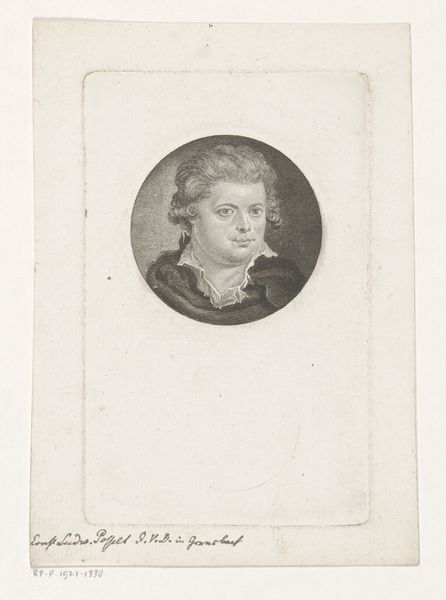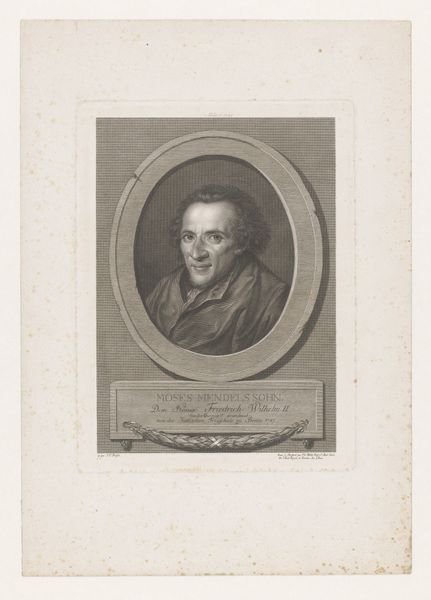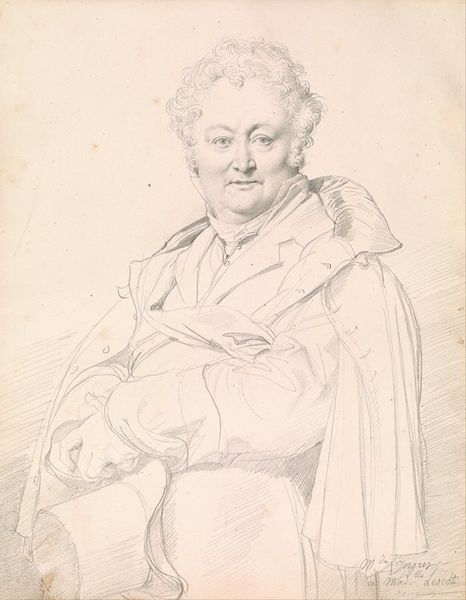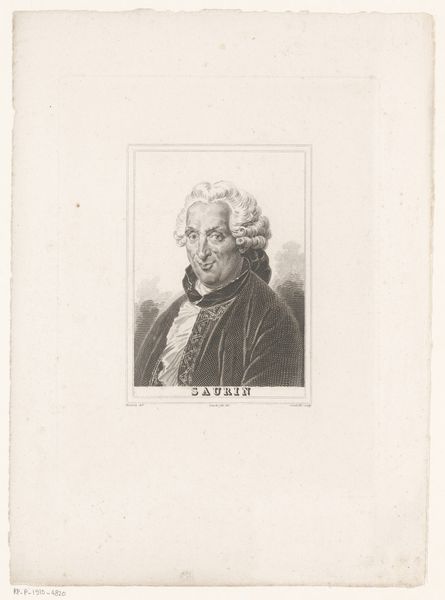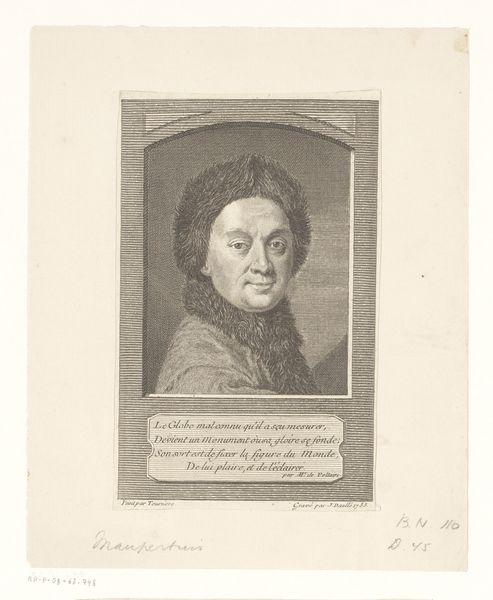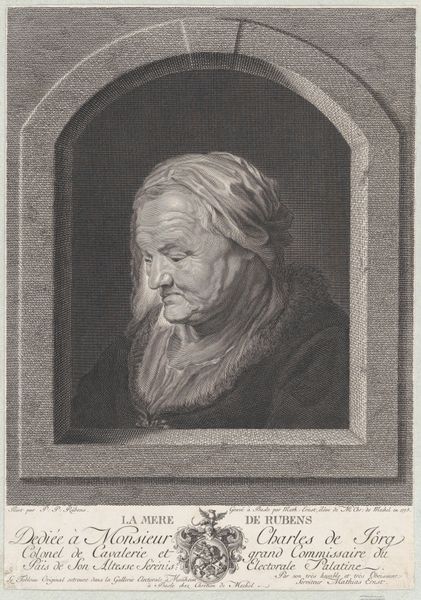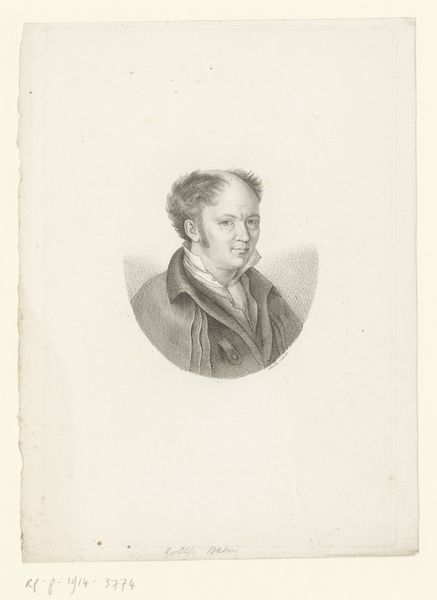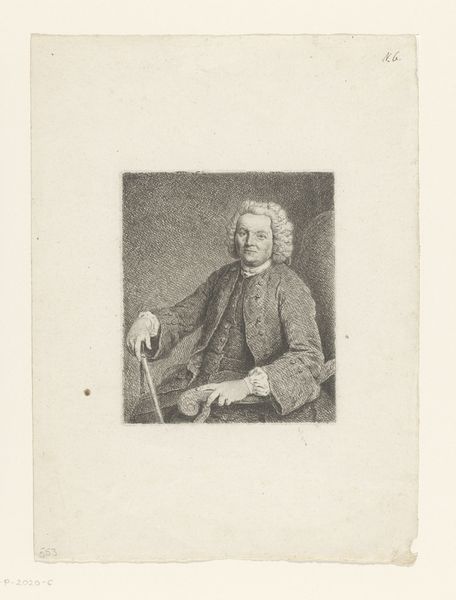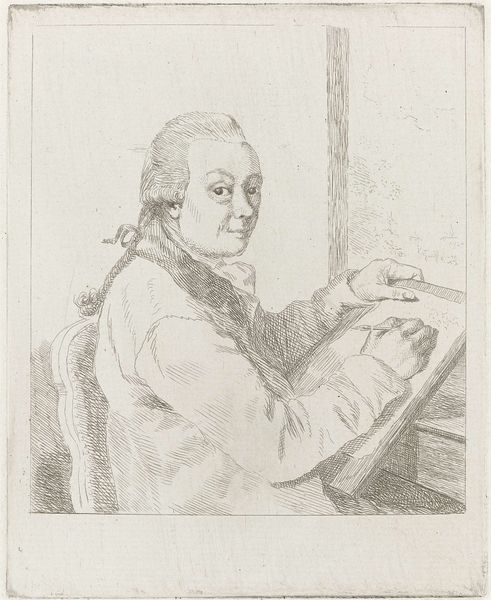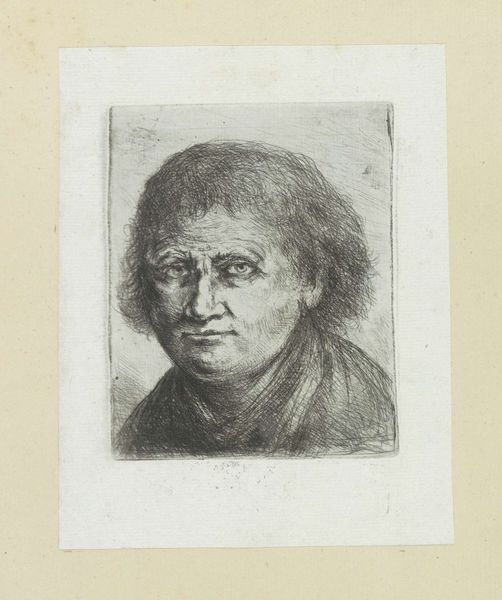
Portrait of Christian Bernhard Rode, the Artist's Father 1756
0:00
0:00
drawing, print, engraving
#
portrait
#
drawing
#
baroque
# print
#
men
#
engraving
Dimensions: Sheet: 8 1/16 × 5 11/16 in. (20.5 × 14.5 cm) Plate: 6 11/16 × 4 5/8 in. (17 × 11.8 cm)
Copyright: Public Domain
This is an etching of Christian Bernhard Rode’s father, made by Rode himself. The image is created by incising lines into a metal plate, inking the plate, and then pressing it onto paper. The magic of etching lies in its indirectness. The artist doesn't directly cut into the metal, but instead draws through a protective coating, which is then eaten away by acid. This allows for a more fluid and natural line than direct engraving. Look closely, and you'll see the velvety texture, a result of the acid biting into the metal. The controlled corrosion gives the print its distinct tonal range. In the 18th century, etching was a favored method for reproducing images and disseminating ideas. Its relative ease compared to engraving allowed for a wider range of artists to participate in printmaking. But beyond its reproductive capabilities, etching became an artistic medium in its own right, prized for its unique aesthetic qualities. By considering the processes and techniques involved, we gain a deeper appreciation for its artistic value.
Comments
No comments
Be the first to comment and join the conversation on the ultimate creative platform.

